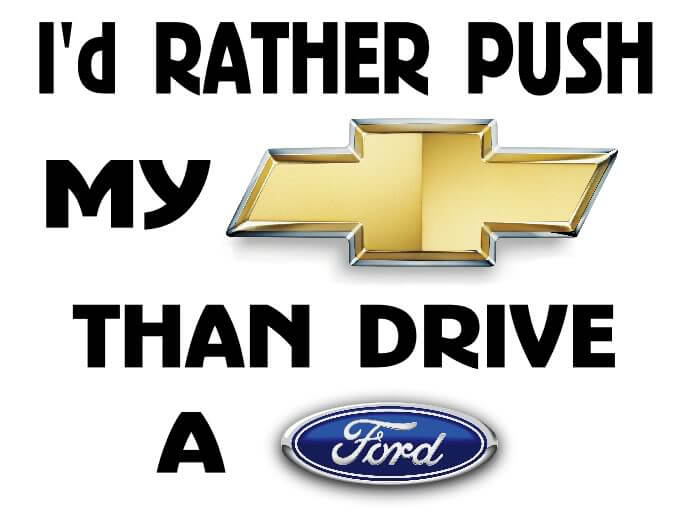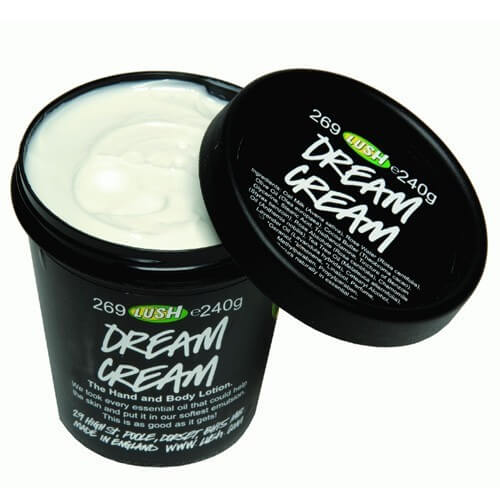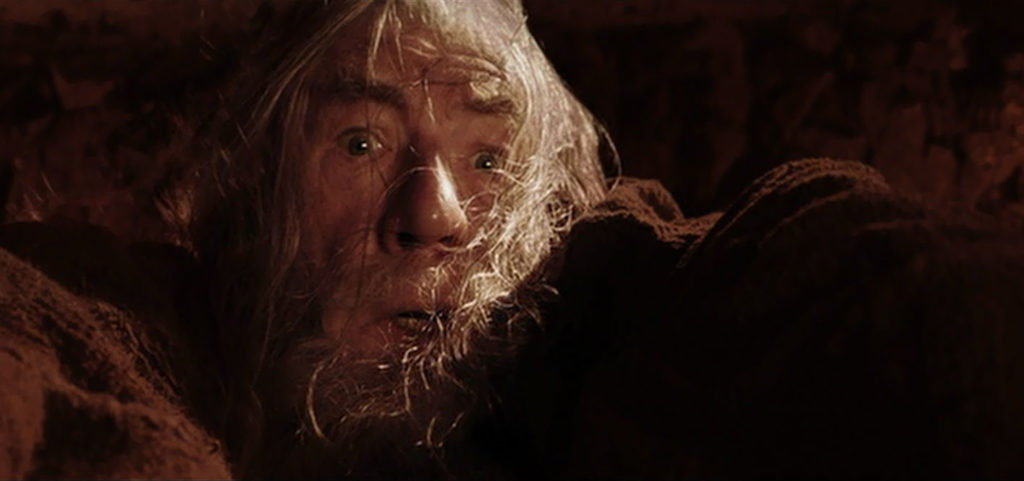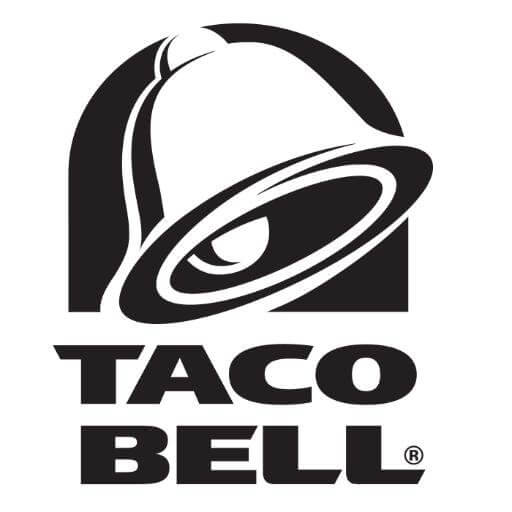Here are three stories:
- I had a dream last night that I was driving.
- I had a dream last night that I was driving, but I didn’t have any hands.
- I had a dream last night that I was driving, but I didn’t have any hands. My wife was in labor in the backseat. I steered with my teeth, weaving in and out of traffic, making it to the hospital just in time.
The first story is boring. The second story is weird. The third story is weird, but at least it’s a story, and that’s because it has conflict.
You passed middle school English class. You know that all stories are supposed to have conflict in order to qualify as stories.
Similarly, brands need some level of conflict in order to rise above the level of mere commodities and become something that people can actually care about. While storytelling and conflict can take a variety of forms within a brand, the most common way to introduce interesting, loyalty-breeding conflict into your brand is by creating an enemy.
But why would you want to harsh things up like that? Isn’t there a better way?
The good news is that no matter how nice you are and how good your brand is for you, your customers and the universe, you can absolutely find an enemy that you can define yourself against.
Your Evangelists Want to Defend Your Brand

Nobody’s making you do anything.
One of the marks of a strong brand is that the consumer will defend you against rivals with as much ferocity as if they themselves were getting attacked (and sometimes more).
The classic examples are well-known: Nike vs. Adidas, Coke vs. Pepsi, Ford vs. Chevy, etc. These adversarial relationships are, at this point, so ingrained in the brands that it’s difficult to imagine one brand without the other. As gleeful as Coke might be if Pepsi went under, it’d be a real shake-up to their identity.
It would be a real shake-up to their customer base, too. Their customers aren’t just trained to question the brand’s enemies: they enjoy doing it.
If you aren’t part of this little tribe of haters, this is probably grade A annoying to you. You don’t understand why someone would rather push a Chevy than drive a Ford but here they are, arguing in your face about it.
However, I can almost guarantee that there’s some brand in your life for which you feel the same way. Maybe it’s a certain brand of headphones, a certain type of water bottle, a brand of cosmetics, whatever: there’s probably something that, if someone started to lightly criticize you for liking it, you’d respond with at least a mumbled “Well, but…”
That response, to a large degree, is usually irrational. You have no skin in the game here. You don’t make a dollar when Lush’s stock goes up a quarter of a point. Yet here you are, at this party, forcing a stranger to try your Dream Cream lotion in the middle of the living room.

Full disclosure: I use their styling cream, shaving cream and their beard cream and everyone there is always nice to me.
“Wait!” you might say. “I like this lotion for purely rational reasons: it’s ethically sourced, totally vegan and works better than any other product I’ve tried.”
Maybe, but you probably assigned these rationalizations retroactively, after the brand had already at least somewhat sucked you in. Maybe you really were sold totally on the product benefits initially – that still doesn’t tell the whole story.
Why we care so much about brands is up for philosophical, psychological and spiritual debate. This WIRED article does a good job exemplifying just how deep-seated this connection can run.
The key example is a study on a group of children who have their favorite toy “duplicated” by a machine. They’re told that the toy is identical in every way and yet they still reject it. The emotional connection to the real thing is too raw.
(Spoiler alert, by the way: it’s the same exact toy and the children are being tricked by cruel scientists.)
WIRED focuses on the question of authenticity, but what I find interesting is the creation of an enemy. The duplicate toy serves as a point of contrast for the real thing, an enemy that disgusts them and drives them away, only deepening their desire for the original.
Brand enemies function in the same way. Like Coke v. Pepsi, the enemy can be almost totally identical in every single way and the similarity will engender more brand similarity, not less.
Finding Your Brand’s Enemy

Gandalf, let’s not get carried away.
With new brands, however, finding an enemy is not so clear cut. People with ambition who want to create something tend to be positive. They don’t want to choose an adversary to define themselves against. They just want to show the world their good works and see how they react.
The hard truth is that failing to find an adversary (or adversaries) puts your brand at a distinct disadvantage. Good branding is about storytelling and a story without conflict, like we’ve already established, is about as dull as it gets.
First, remind yourself that having an enemy does not lock you into an eternal, Gandalfian struggle. They’re not the target of your aggression. They’re just the anti-you.
Second, lay out your brand’s values and mission. What did you set out to do? What did you set out to improve? What do you imagine yourself as the alternative to?
The answer to that last question might be your direct competition, but it doesn’t have to be.
Take a brand like Disneyland. It’s supposedly one of the happiest places on Earth, at least if you ask them (which, for our purposes, we’ll take at face value). How could something like that have an enemy?

There’s plenty to dislike about Disneyland. Just not in their created universe.
Consider the implicit promise that Disneyland makes: they’ve created a space that is totally immersed in fantasy, where dreams come true and where beasts, street rats, mermaids and dwarves peacefully co-exist, waiting to take a picture with your child. The whole enterprise rests on their ability to create an alternate reality that can contain all this magic.
In other words, Disneyland’s enemy is the real world. You may spend a lot of money in Disneyland, but you don’t pay bills. You might spend the whole day on your feet sweating, but nobody works. Everything is possible, everything is safe and everybody cares about you. That’s about as far from the real world as you can get.
( ? )
It goes without saying that even as Disneyland takes the real world as its enemy, it exists happily alongside it.
It’s also worth noting that the real world doesn’t necessarily take Disneyland as its enemy. These types of adversarial relationships do not have to be reciprocal. Your enemy does not have to know you exist.
Let’s bring this down to a more manageable level. Let’s say you’re opening a hip new Mexican restaurant downtown. We’re talking 12 dollar margaritas and tiny, expensive tacos.
You could take multiple enemies here. One might be Taco Bell, which serves the same types of food but scales it down from a trendy experience to something you do when you’re sad in your car. You’ve got to convince people that same type of food is worth the money.
You could take the gastropub as an enemy. They’re going after a similar set of customers, but for all of their obsession with craft beer and heavy meals, you’re offering a spicier, brighter and more fun alternative.
And who would take you as the enemy? Not Taco Bell – they’re more concerned with portraying themselves as a more unique alternative to other fast food places. The gastropub might – but they’re probably more concerned with other bars and burger joints.
The food trucks and Mexican grocery stores, though, probably have you squarely in their sights. With you as their enemy, they can better define how they serve a more authentic, more satisfying version of Mexican cuisine than you do. That kind of definition helps to establish the context of both brands’ existences, giving you a stronger identity and everybody’s customers something to defend.

Everyone is hating on your right now, Taco Bell, but let’s see how they feel next time they’re hungry at 2am.
A note: finding an enemy for your brand is at its most difficult when your brand is still in its early, undefined, amorphous stages. Maybe you’ve decided you want to open a gastropub and you’re trying to figure out how to set yourself apart from the competition. At this point, how do you choose the bone of contention that will set the foundation for your rivalry?
There are two basic ways to go about it. You could sit down and brainstorm a list of your competitors’ values and then figure out how you might oppose them. Alternatively, and probably more fruitfully, you could figure your own values out first and let those guide you. You might come up with something a lot more powerful, and a lot more surprising, than defining yourself in opposition to your competition from the outset.
Of course, a world where you have high demand and no competition would probably be better for your bottom line. But that’s a world where you don’t really need to do much branding as well as a world that will never exist.
In the meantime, you should work to tell the story of who your brand is and why you exist. It’s the only way to create a customer loyal enough to defend you against your enemies, even if you’re the one that decided those enemies in the first place.
